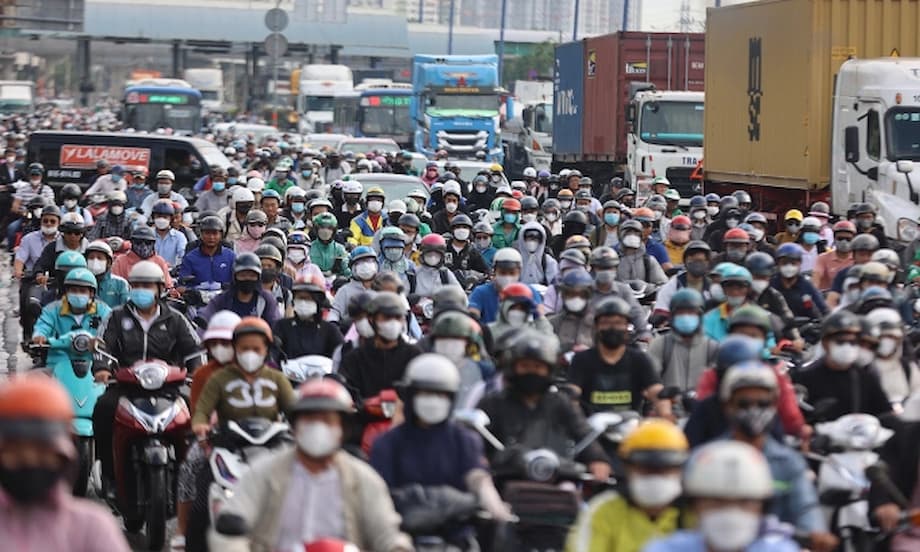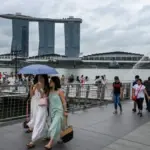Ho Chi Minh City’s Bold Plan: Banning Gasoline Vehicles Downtown by 2026
Ho Chi Minh City (HCMC), Vietnam’s bustling southern metropolis, is preparing to launch one of Southeast Asia’s most ambitious urban clean-air initiatives: a phased ban on gasoline and diesel vehicles from its downtown core starting in 2026. The plan, which targets the city’s most congested and polluted districts, aims to transform the urban landscape, protect public health, and position HCMC as a leader in the region’s green transition. The move comes amid mounting concerns over air pollution, rapid urbanization, and the global push for sustainable transport solutions.
- Ho Chi Minh City’s Bold Plan: Banning Gasoline Vehicles Downtown by 2026
- Why Is Ho Chi Minh City Banning Gasoline Vehicles?
- What Is the Low Emission Zone (LEZ) Plan?
- How Will the Ban Affect Residents and Businesses?
- Challenges and Concerns: Is the City Ready?
- Comparisons with Hanoi and Global Trends
- Broader Implications: Economic, Social, and Environmental Impact
- Expert Perspectives and Public Opinion
- In Summary
Why Is Ho Chi Minh City Banning Gasoline Vehicles?
Air pollution is a persistent and growing problem in Vietnam’s major cities. In HCMC, more than 9.6 million vehicles—over 8.6 million of them motorbikes—crowd the streets, contributing to traffic jams, smog, and health risks. According to the World Health Organization, air pollution is linked to over 60,000 deaths annually in Vietnam. The city’s air quality index (AQI) frequently registers in the “poor” to “very poor” range, especially in densely populated urban areas.
Transport emissions are a primary culprit. As incomes rise, more residents are purchasing private vehicles, further straining the city’s infrastructure and environment. Without intervention, experts warn that HCMC’s total transport emissions could more than double by 2030, exacerbating respiratory illnesses and undermining quality of life.
The city’s new plan is part of a broader national strategy to reduce emissions, improve public health, and modernize urban transport. Hanoi, the capital, is implementing similar measures, reflecting a nationwide commitment to cleaner air and sustainable development.
What Is the Low Emission Zone (LEZ) Plan?
The centerpiece of HCMC’s initiative is the creation of Low Emission Zones (LEZs) in the downtown core and the coastal district of Can Gio. These zones will restrict access to vehicles that do not meet strict emissions standards, with the ultimate goal of phasing out gasoline and diesel vehicles entirely by 2032.
Boundaries and Target Areas
The downtown LEZ will be bounded by major bridges and arterial roads, including Dien Bien Phu, Bong, Cong Ly, Calmette, Khanh Hoi, and Nguyen Huu Canh bridges, as well as key streets like Cach Mang Thang Tam, 3 Thang 2, Le Hong Phong, and Tran Hung Dao. These areas are among the city’s most congested and polluted.
Can Gio, home to a UNESCO-recognized biosphere reserve, is included to protect its fragile ecosystems and promote sustainable tourism. The inclusion of this coastal district underscores the city’s commitment to balancing economic growth with environmental stewardship.
Phased Implementation Roadmap
The plan follows a detailed, seven-phase roadmap:
- 2025: Preparation year for building legal frameworks and infrastructure.
- 2026: Restrictions begin for commercial cars not meeting Euro 4 standards and service motorbikes below Euro 2.
- 2027: All motorbikes must pass emissions tests to enter the LEZ.
- Late 2028: Ride-hailing motorbikes must be fully electric.
- December 2029: Gasoline-powered motorbikes banned from app-based transport services.
- 2030: Low-emission rules apply to all personal vehicles in the downtown area.
- 2032: Review and potential expansion of the LEZ to areas within Ring Road 1.
Enforcement will rely on license plate recognition cameras and digital monitoring systems. Non-compliant vehicles will be fined, and the city plans to offer rewards to whistleblowers who report violations.
How Will the Ban Affect Residents and Businesses?
The transition to a low-emission city will have far-reaching impacts on daily life, especially for low-income residents and small business owners who rely on older vehicles. Recognizing this, city authorities are designing support measures to ensure an inclusive and equitable transition.
Financial Support and Incentives
HCMC plans to provide targeted financial assistance, including:
- Cash subsidies for low-income households and small businesses to help them purchase electric vehicles (EVs).
- VAT exemptions, registration fee waivers, and preferential loans for those switching to clean-energy vehicles.
- Incentives for EV manufacturers and investors in charging and battery swap stations.
For example, Hanoi’s draft policy offers cash subsidies ranging from VND 3 million (about USD 114) for general individuals to VND 5 million (about USD 191) for poor households. HCMC is expected to adopt similar measures, with additional support for ride-hailing and delivery drivers.
Ride-Hailing Motorbikes: A Key Focus
One of the most significant targets is the city’s fleet of ride-hailing motorcycles, which number around 400,000. These vehicles are used intensively—drivers average 80-120 kilometers per day—and contribute disproportionately to urban emissions. The city aims to:
- Convert 30% of ride-hailing motorcycles to electric by the end of 2026.
- Reach 80% conversion by the end of 2027.
- Achieve 100% electric ride-hailing motorcycles by the end of 2029.
To support this transition, the city will stop issuing new operating licenses for gasoline-powered ride-hailing motorcycles from early 2026 and restrict their use during peak hours in LEZs from 2027. By 2029, gasoline motorcycles will be completely banned from ride-hailing platforms.
Public Transport and Infrastructure Upgrades
To provide viable alternatives to private vehicles, HCMC is investing in:
- Expanding electric bus routes and introducing more environmentally friendly buses.
- Developing public bicycle-sharing systems and green corridors for pedestrians and cyclists.
- Building a comprehensive network of EV charging stations at parking lots, shopping centers, and major traffic hubs.
Currently, there are only about 600 public charging points in the city, meeting less than 10% of projected demand. The plan calls for at least 3,000 public charging and battery swap stations before December 2028, with requirements for new buildings to have 30% of parking spots equipped with chargers.
Challenges and Concerns: Is the City Ready?
While the plan is ambitious, it faces significant hurdles. Many residents are concerned about affordability, the readiness of public transport, and the adequacy of charging infrastructure. Most vehicles in HCMC are over 10 years old, and the cost of new electric vehicles remains high for many families.
Experts and policymakers emphasize the need for a gradual, people-centered transition. Dr. Duong Hoang Tung, head of the Vietnam Clean Air Network, supports the government’s commitment but stresses the importance of direct support policies and public communication:
“Millions of motorbikes may need to be replaced. Direct support policies from the State are necessary to ensure a smooth transition.”
Assoc. Prof. Dr. Bui Thi An, a former member of the National Assembly’s Committee on Science, Technology and Environment, highlights the urgency of the plan but calls for substantial funding and investment in EV infrastructure:
“A well-designed implementation plan and substantial funding for vehicle replacement and charging infrastructure are essential for success.”
Economist Vu Dinh Anh notes that the policy will mainly affect residents and commuters in the city center, and recommends a broad, non-discriminatory approach to avoid social disruption.
Battery Recycling and Environmental Safeguards
As the city shifts to electric vehicles, new environmental challenges arise—particularly the management of used EV batteries. HCMC plans to build a battery recycling center with an annual processing capacity of 3,000 tons. Up to 95% of metals in batteries can be recovered, and used batteries may be repurposed for solar power storage or rural electricity supply. This initiative aims to prevent environmental issues from discarded batteries and integrate the city into global green supply chains.
Comparisons with Hanoi and Global Trends
HCMC’s plan is part of a nationwide movement. Hanoi, with over seven million motorcycles and just over a million cars, will ban fossil-fuel motorcycles within Ring Road 1 starting July 1, 2026. The ban will expand to Ring Road 2 by 2028 and to Ring Road 3 by 2030, eventually including restrictions on gasoline cars. Hanoi is also introducing cash subsidies, preferential loans, and requirements for charging infrastructure in new and existing buildings.
Both cities are following a phased approach, balancing environmental goals with social realities. The government is keen to avoid the pitfalls seen in other countries, where abrupt bans have led to public backlash and logistical challenges.
Globally, cities like Amsterdam, Paris, and Milan have introduced low-emission zones or outright bans on fossil-fuel vehicles. HCMC’s plan aligns with these international trends, signaling Vietnam’s commitment to sustainable urban development.
Broader Implications: Economic, Social, and Environmental Impact
The transition to low-emission transport is expected to yield multiple benefits:
- Public Health: Reduced air pollution will lower rates of respiratory and cardiovascular diseases, improving overall quality of life.
- Economic Opportunity: The shift to electric vehicles and green infrastructure creates new markets for manufacturers, startups, and service providers. HCMC aims to become a key player in the global green economy supply chain.
- Urban Livability: Less traffic congestion, quieter streets, and more green spaces will make the city more attractive for residents and tourists alike.
However, the transition also poses risks, especially for vulnerable groups. Policymakers must ensure that support measures reach those most affected and that public transport and infrastructure upgrades keep pace with the phase-out of fossil-fuel vehicles.
Expert Perspectives and Public Opinion
Experts broadly support the city’s direction but caution that success depends on careful implementation, robust support systems, and ongoing public engagement. Surveys indicate that over 70% of citizens need financial assistance or low-interest loans to switch to electric vehicles. Concerns about fire safety, battery management, and grid capacity must also be addressed.
Public opinion is mixed. Many residents support cleaner air and modern transport but question whether the city is ready for such a sweeping change. The need for better public transport, more charging stations, and affordable EV options is a recurring theme in public discussions.
In Summary
- Ho Chi Minh City plans to ban gasoline and diesel vehicles from its downtown core starting in 2026, with a complete phase-out by 2032.
- The initiative targets areas with the highest traffic density and pollution, including the downtown core and Can Gio district.
- The plan follows a phased roadmap, with increasing restrictions on non-compliant vehicles and support measures for affected residents.
- Ride-hailing motorcycles are a key focus, with a target of 100% electric conversion by 2029.
- Financial incentives, expanded public transport, and new charging infrastructure are central to the plan’s success.
- Challenges remain, including affordability, infrastructure readiness, and public acceptance.
- The plan aligns with national and global trends toward sustainable urban transport and cleaner air.












